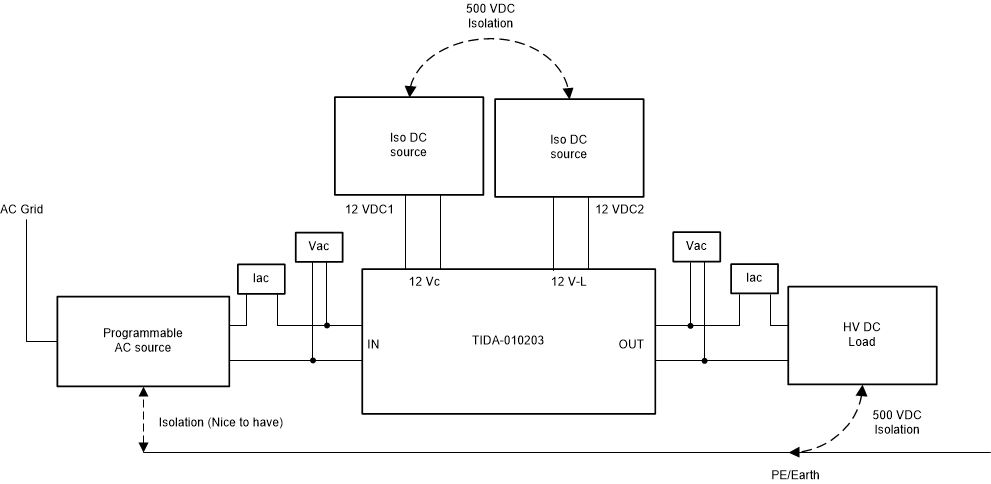TIDUEZ3B april 2021 – april 2023
- Description
- Resources
- Features
- Applications
- 5
- 1System Description
- 2System Overview
- 3Hardware, Testing Requirements, and Test Results
- 4Design and Documentation Support
- 5About the Author
- 6Revision History
3.3.1 Test Procedures
Figure 3-2 shows the EUT setup.

Figure 3-2 EUT Setup
Power on procedure:
- Power on the FAN for cooling
- Power for 12VDC_1, power consumption should be near 0.13 A
- Power for 12VDC_2, power consumption should be smaller than 0.01 A
- Set the DC load to CC mode, 0.5 A, load on
- Power on the AC source (200 VAC–277 VAC), will see DC output gradually increase to 400 VDC
- Adjust DC load between 0–10A, for test
Power off procedure:
- Reduce the load to 1A
- Power off the AC input
- Power off the 12VDC_1 and 12VDC_2
- Turn off the cooling FAN